Manage imported data
Search for and manage existing imported data.
After you import data, you can manage it through the Dashboard.
CSV imports
After you upload a CSV, you can refresh the page to see the status of the import in the Imported files preview on the top right.
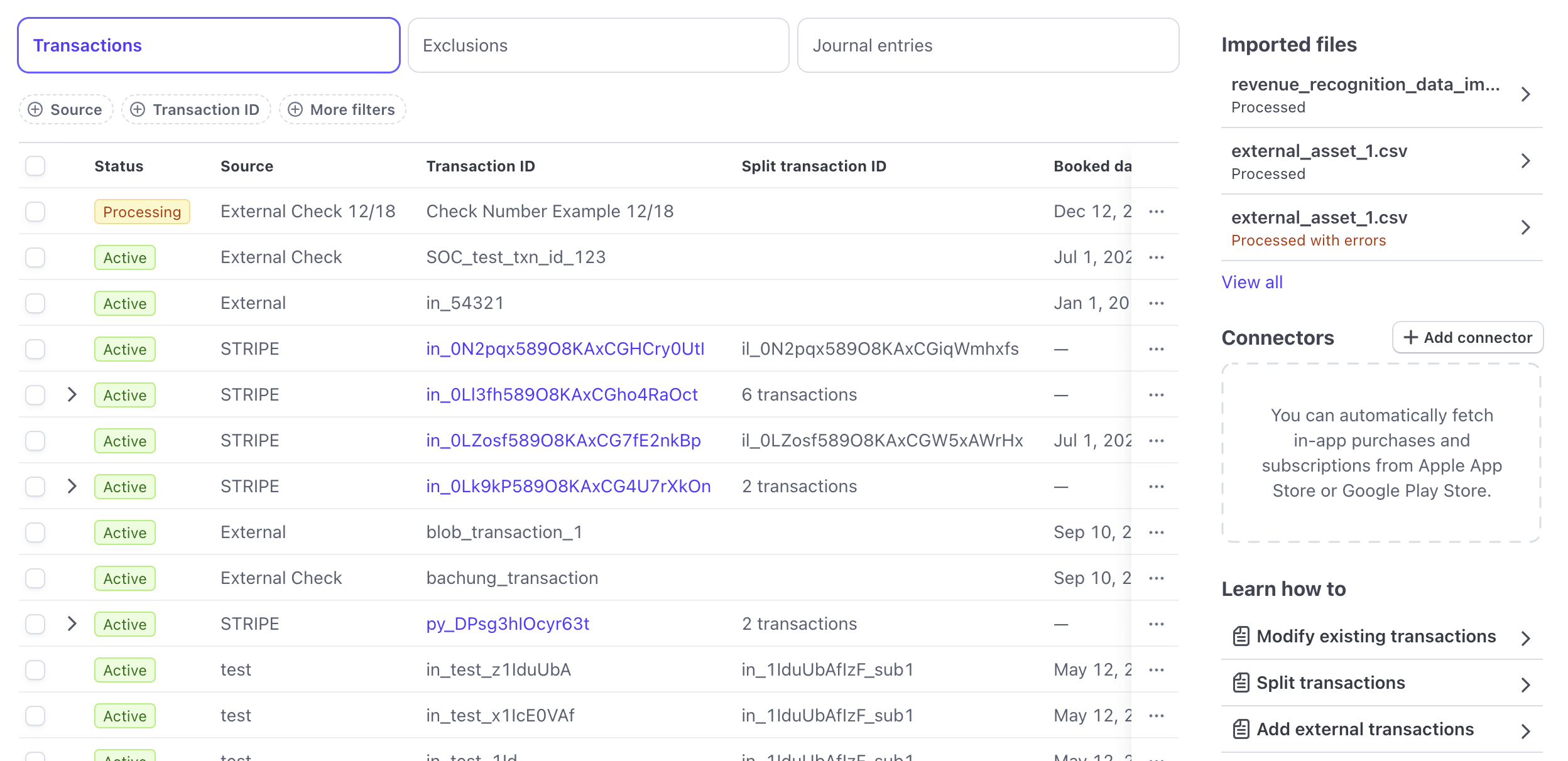
Click View all to see a list of all imported files.

To identify the import type, view the label under the file type column. These are the label types:
- Transactions (for general import)
- Exclusions (for exclusion import)
- Journal entries (for journal entry import)
Successful imports show the number of lines imported. Error messages for unsuccessful imports display alongside the specific line numbers where they occurred.
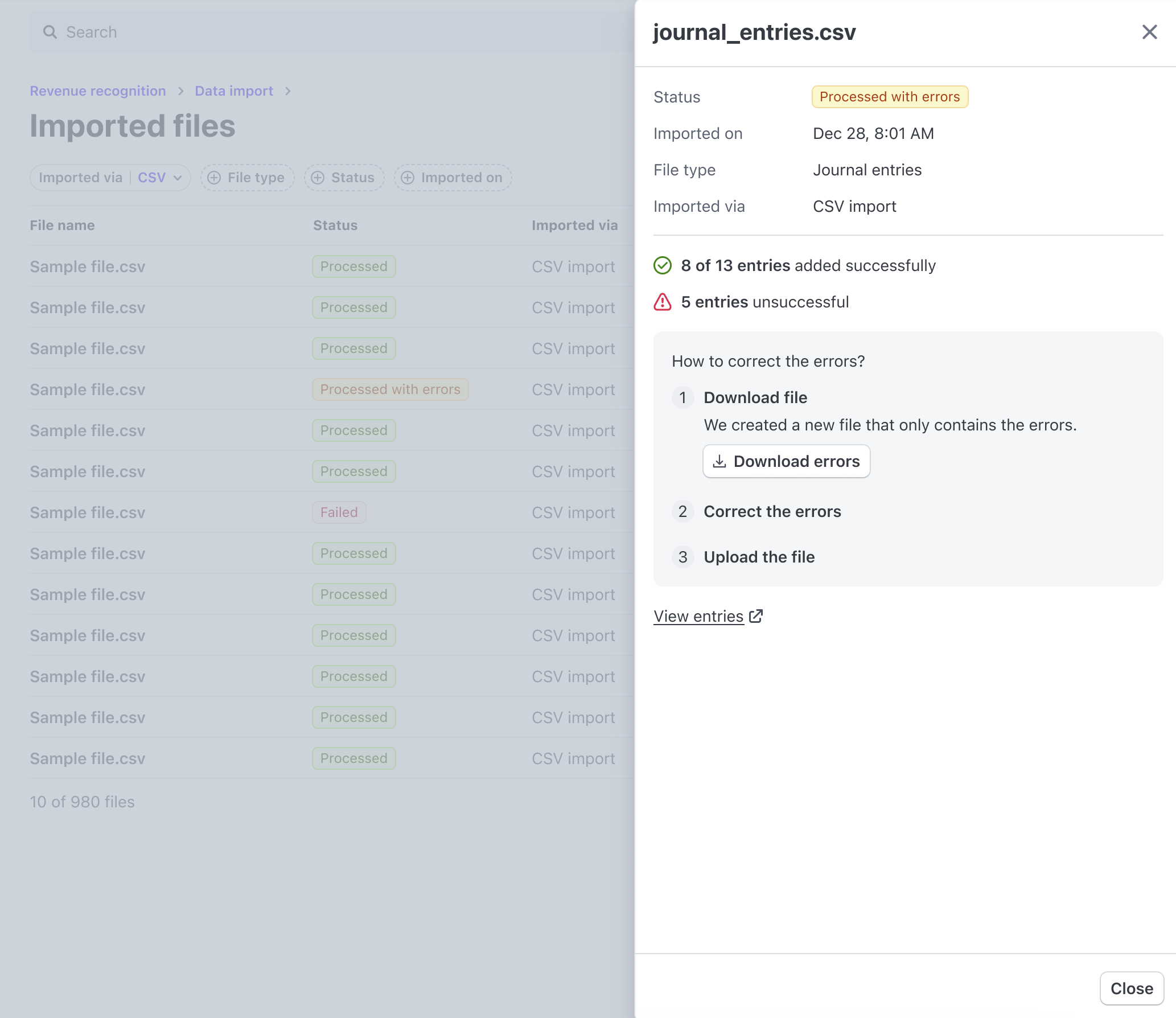
Transactions
From the list view, you can see a paginated view of all transactions that you’ve imported. For Stripe transactions, we provide a link to the main transaction page in the Dashboard.
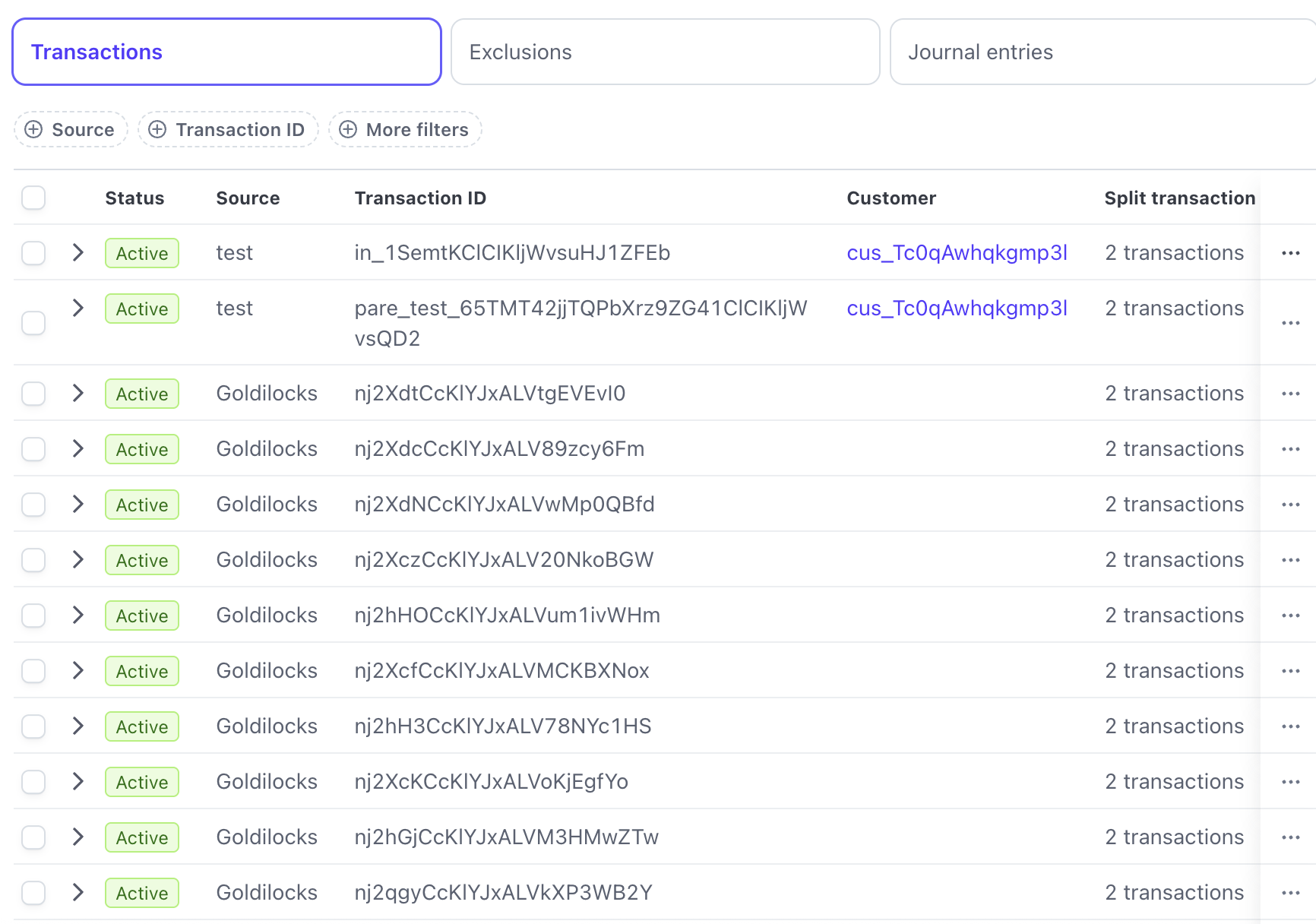
The column format follows the CSV format, with the addition of a status column. An Active status indicates that the Revenue Recognition reports include the imported data. A Processing status indicates that our system has recorded the imported data, but revenue recognition reports don’t yet include this data.
Transactions that have been split into multiple components have a caret icon that you can click to reveal the applicable split transactions.
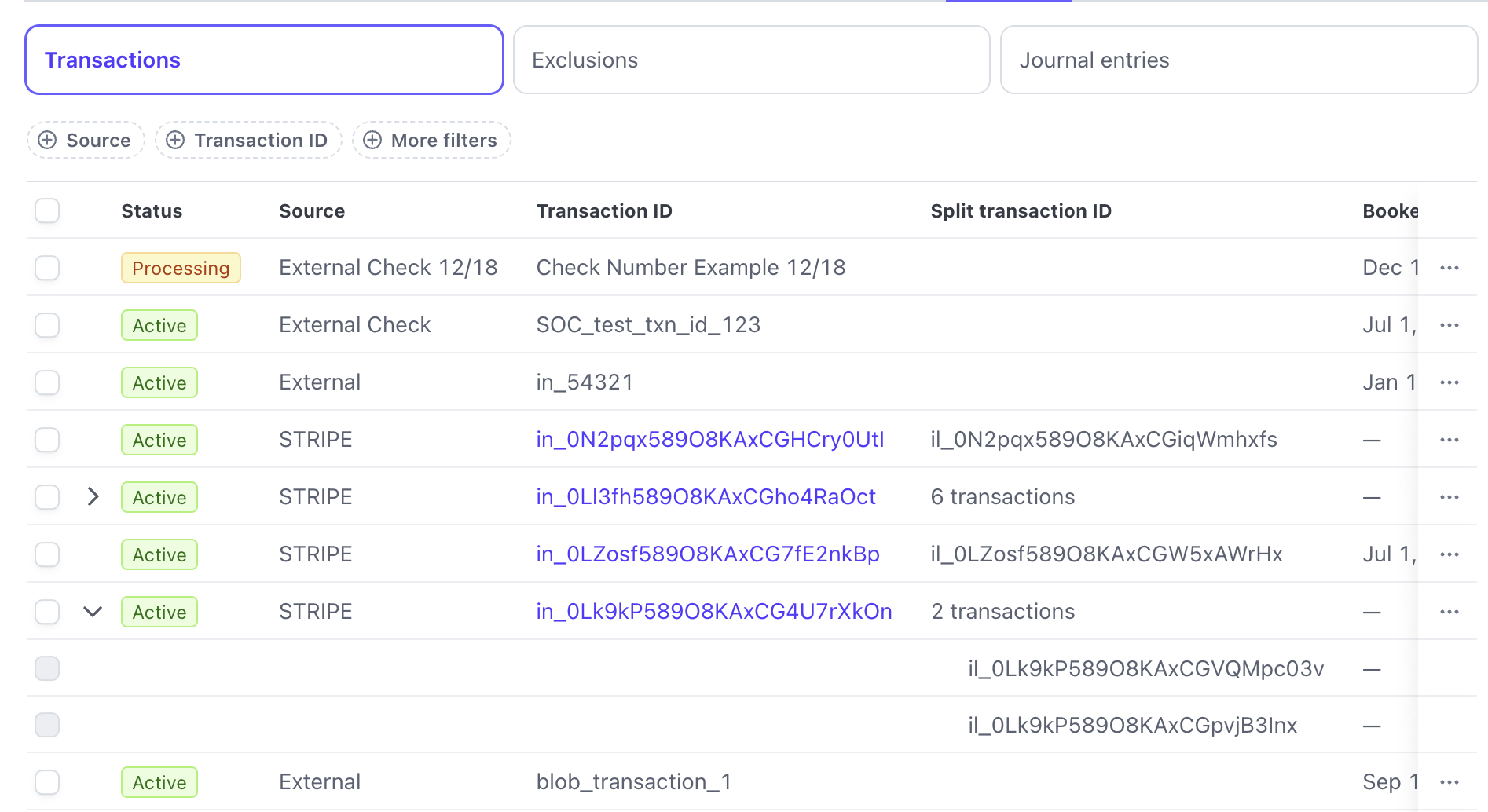
Filtering
The transaction list supports filtering on all of the dates associated with the imported data. Additionally, you can filter on Source, Transaction ID and Split transaction ID, but these values must be exact matches.
Deletion
To delete a transaction, select its checkbox and click Delete. It can take up to 24 hours for Revenue Recognition reports to reflect deletions.
Exclusions
From the list view, you can see a paginated view of all excluded transactions that you imported. For transactions other than invoice items, we provide a link to the main transaction page in the Dashboard.
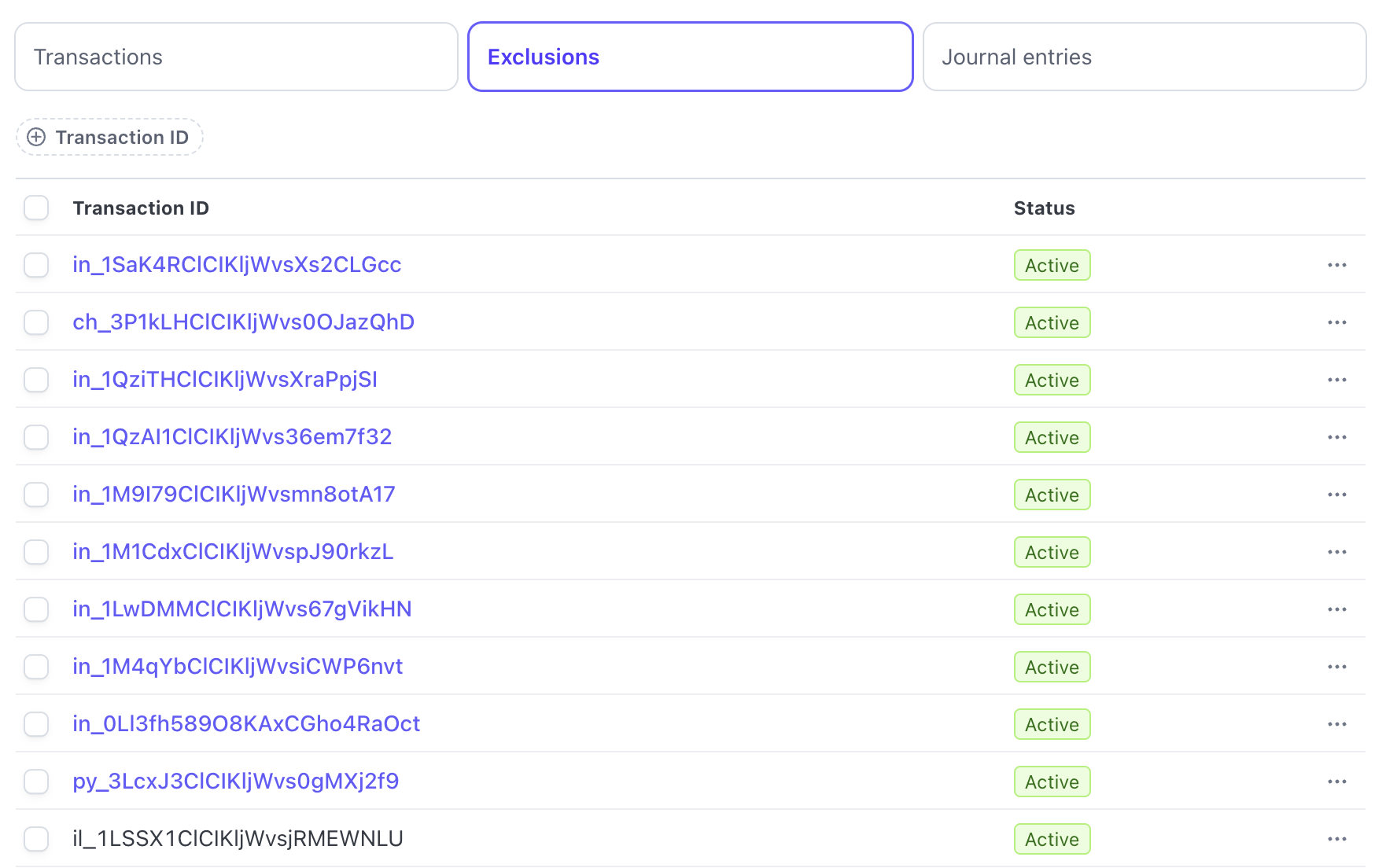
The column follows the exclusion CSV format, with the addition of a status column. An Active status indicates that the transaction is excluded from your Revenue Recognition reports. A Processing status indicates that our system has recorded the transaction to be excluded, but Revenue Recognition reports don’t yet exclude this data.
Filtering
The exclusion list supports filtering on the ID of the excluded transactions on exactly matched values.
Deletion
To reverse the exclusions, select the transaction checkbox and click Delete. It can take up to 24 hours for Revenue Recognition reports to reflect reversals.
Journal Entries
From the list view, you can see a paginated view of all journal entries that you imported.
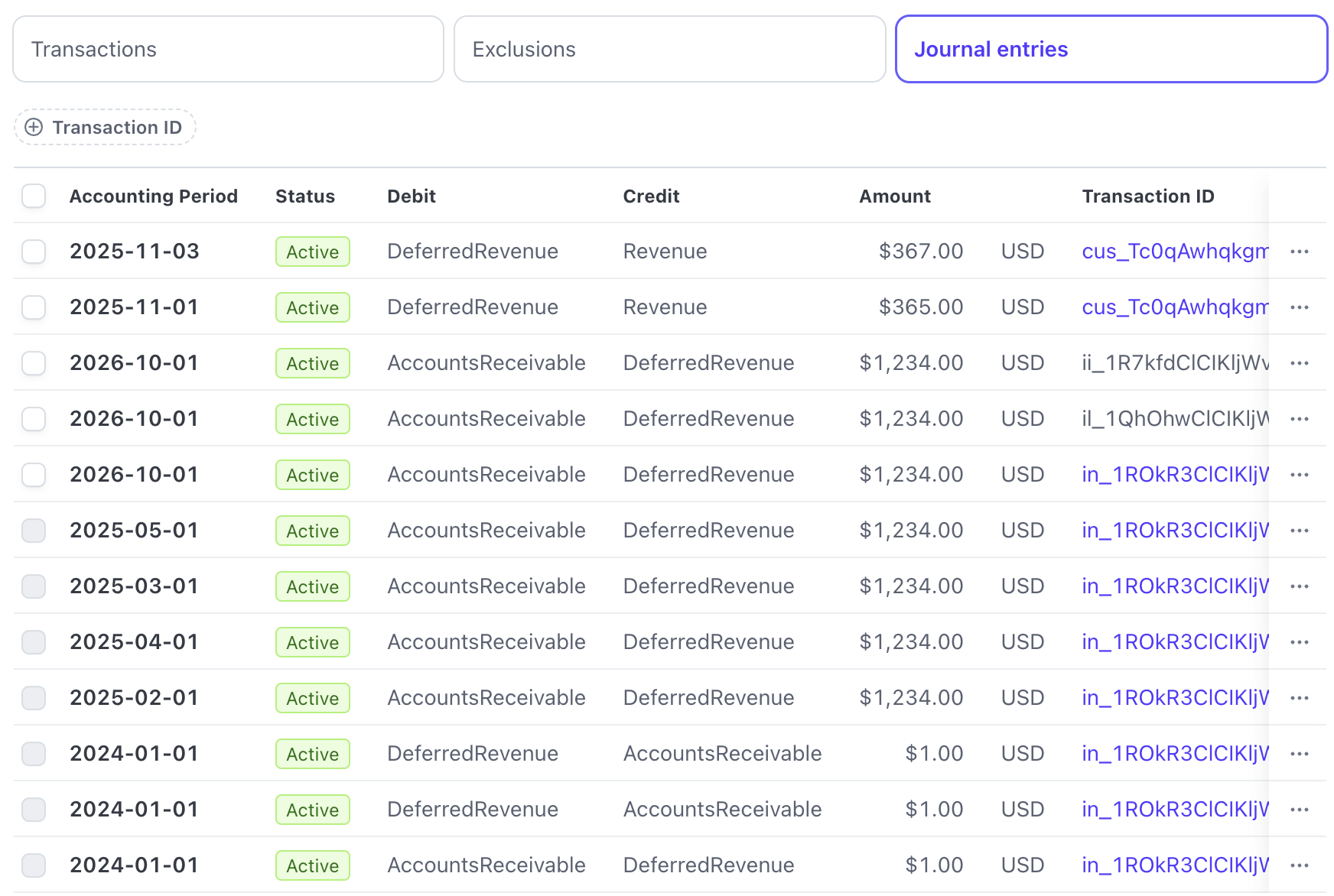
The column follows the journal entry CSV format, with the addition of a status column. An Active status indicates that the journal entry is included in your Revenue Recognition reports. A Processing status indicates that our system has recorded the journal entry, but Revenue Recognition reports don’t yet include this data.
Filtering
The journal entry list supports filtering on the ID of the journal entries on exactly matched values.
Deletion
To reverse the journal entries, select the journal entry checkbox and click Delete. Note that only journal entries in open accounting periods can be deleted. To delete a journal entry in a closed accounting period, you will have to reopen the accounting period first. It can take up to 24 hours for Revenue Recognition reports to reflect deletions.